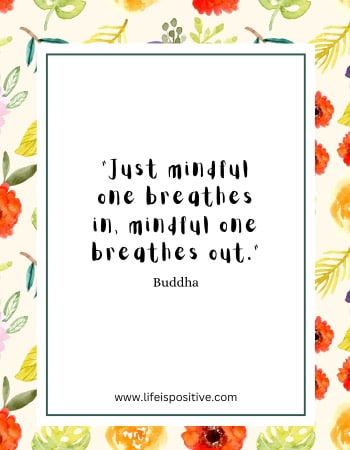|
Getting your Trinity Audio player ready...
|
Let’s be honest—life can feel like a blur. Between the constant scrolling, multitasking, and racing from one thing to the next, we often move through our days half-awake.
But what if there was a way to slow down, reconnect, and truly see what’s happening right now? That’s where mindfulness comes in. But more specifically, what is mindfulness in Buddhism?
The Roots of Mindfulness in Buddhism
Mindfulness might feel trendy today, but its roots go back thousands of years. In Buddhism, mindfulness is known as sati—a foundational element of the spiritual path.
So what is mindfulness in Buddhism? It’s not just about focusing on your breath or relaxing your mind. It’s about cultivating a deep, non-judgmental awareness of your thoughts, feelings, body, and surroundings.
Mindfulness in Buddhism is part of the Noble Eightfold Path, which is essentially the Buddha’s roadmap to liberation from suffering. Right Mindfulness (samma sati) is one of these eight core principles, and it’s considered essential for awakening.
This shows us that mindfulness isn’t just a tool for stress relief—it’s a spiritual practice with the power to transform how we experience life.
So, What Is Mindfulness in Buddhism Really About?
At its core, mindfulness in Buddhism is the practice of paying attention, on purpose, in the present moment, and without attachment.
You’re not trying to control your thoughts or force them to stop—you’re simply observing. You notice a thought arise, and you watch it pass. You feel a sensation in the body, and you stay with it, instead of running from it.
This kind of awareness helps us break free from the constant loop of craving, aversion, and distraction. Instead of being pulled in every direction by your mind, you become the observer of your experience. That shift is where the freedom begins.
Everyday Mindfulness, the Buddhist Way
You don’t have to live in a monastery to practice Buddhist mindfulness. In fact, everyday life offers endless opportunities to be mindful. Washing dishes, walking your dog, having a conversation—these are all perfect moments to tune in.
So, what is mindfulness in Buddhism in real life? It’s choosing to be present while brushing your teeth, feeling the water on your hands while doing the dishes, or actually tasting your food instead of inhaling it while scrolling on your phone. It’s bringing sacred awareness to the ordinary.
Buddhist teachers often remind us that mindfulness isn’t something you “do”—it’s something you return to. It’s already within you. The practice is simply remembering to come back to it, again and again.
Mindfulness and the End of Suffering
In Buddhism, suffering—or dukkha—is seen as a natural part of human life. But the Buddha taught that suffering can be reduced and even ended by understanding and transforming our minds. That’s where mindfulness comes in.
If you’re wondering what mindfulness is in Buddhism in relation to suffering, here’s the key: mindfulness helps you recognize your reactions, attachments, and unconscious habits. When you see them clearly, they lose their power over you. You can choose differently. You can choose peace, even when life feels chaotic.
Rather than getting caught in your emotional storm, you become the calm center that watches the storm pass. That’s the essence of spiritual freedom.
Read: What is The Purpose of Buddhist Meditation?
The Spiritual Benefits of Mindfulness in Buddhism
Let’s take a moment to really ground in the deeper benefits of Buddhist mindfulness—not just for your mental health, but for your soul.
• Clarity: You begin to see things as they really are, not as your mind filters them.
• Compassion: You relate to your own suffering (and others’) with more gentleness.
• Non-attachment: You start letting go of things that don’t serve your growth.
• Inner peace: You develop a calm steadiness that isn’t shaken by every outside trigger.
• Awakening: With consistent practice, you begin to touch moments of true presence—and that’s where awakening begins.
Mindfulness in Buddhism: It’s not a self-help hack. It’s a path to waking up.
But What If You’re New to Mindfulness?
No worries. Mindfulness doesn’t require perfection—it requires presence. You’re going to get distracted. You’re going to forget. That’s part of the process. Every time you come back to the present moment, that is the practice.
Start with a few minutes of breath awareness each day. Or try mindful walking. Even one conscious breath is a step toward deeper mindfulness. Don’t overcomplicate it. This is a gentle path, not a performance.
Final Thoughts: What is Mindfulness in Buddhism?
Mindfulness in Buddhism is a sacred practice of waking up to your life, one moment at a time. It’s the art of observing without clinging, reacting, or judging. It’s your way out of suffering, and your way back to yourself.
In a world that constantly pulls you outward, mindfulness pulls you inward—to truth, clarity, and peace. You don’t need to change who you are. You just need to slow down, notice, and be here, now.
Because this moment? It’s all you’ve ever had—and all you truly need.
For more empowering content, connect with our vibrant community here ➡️ Social Media.


